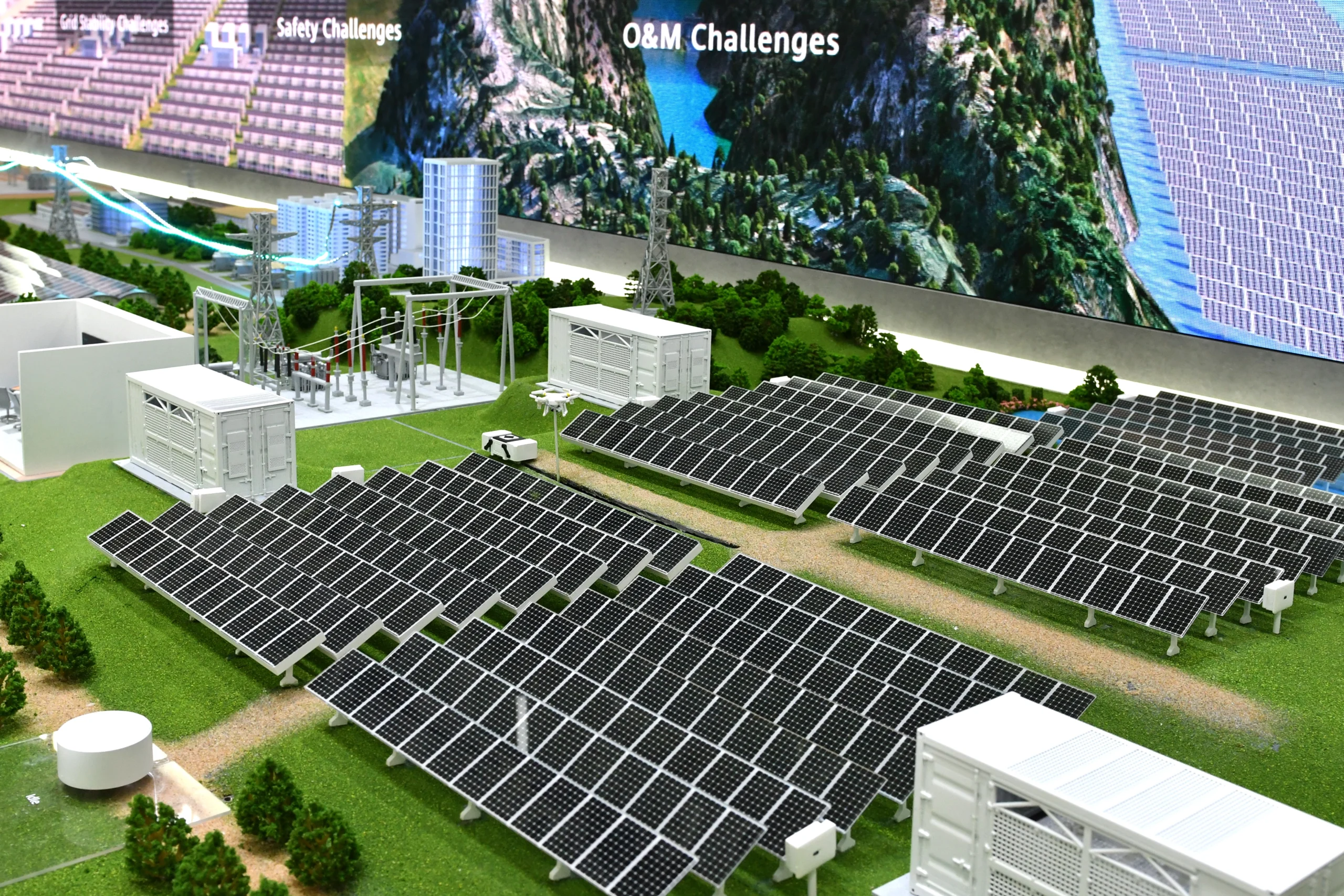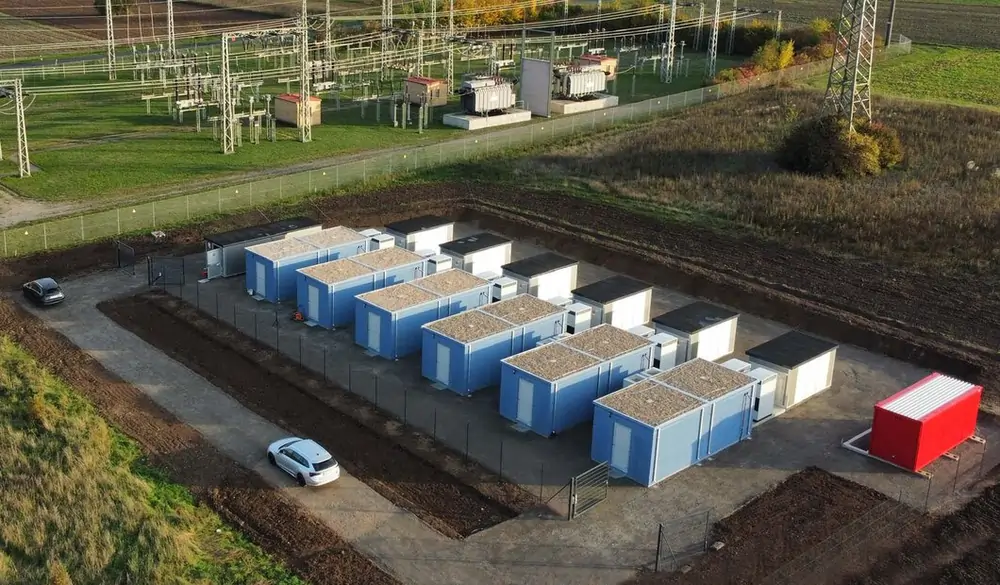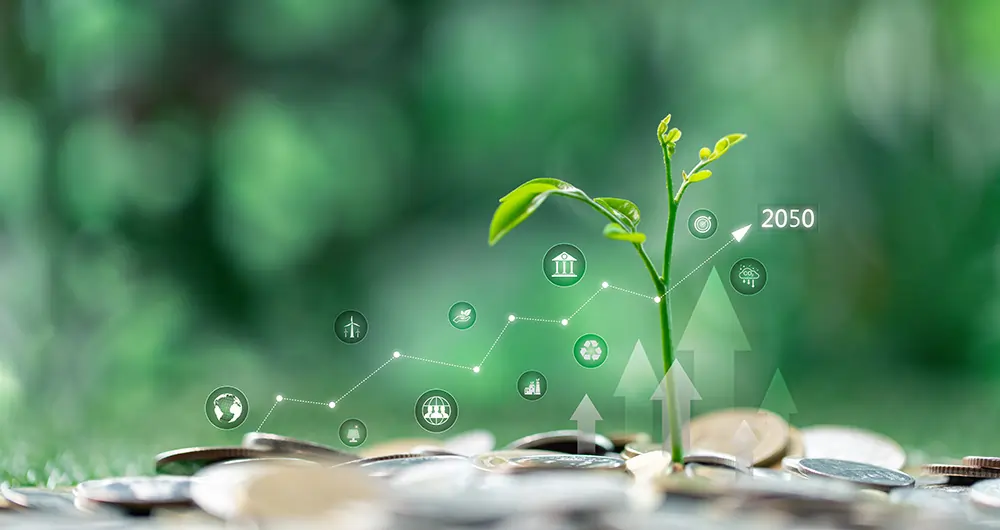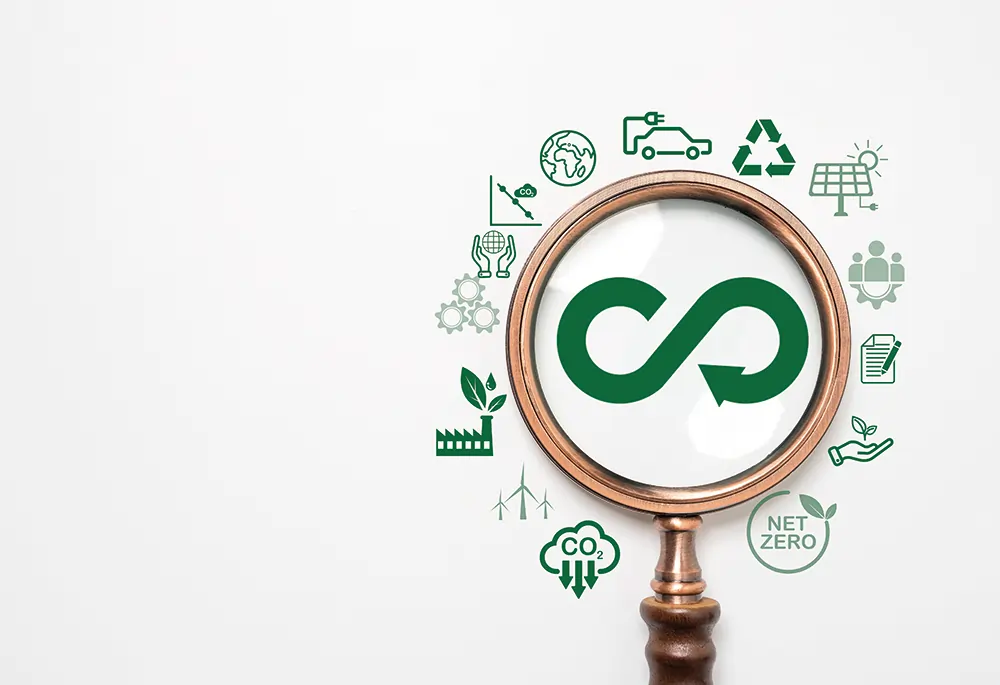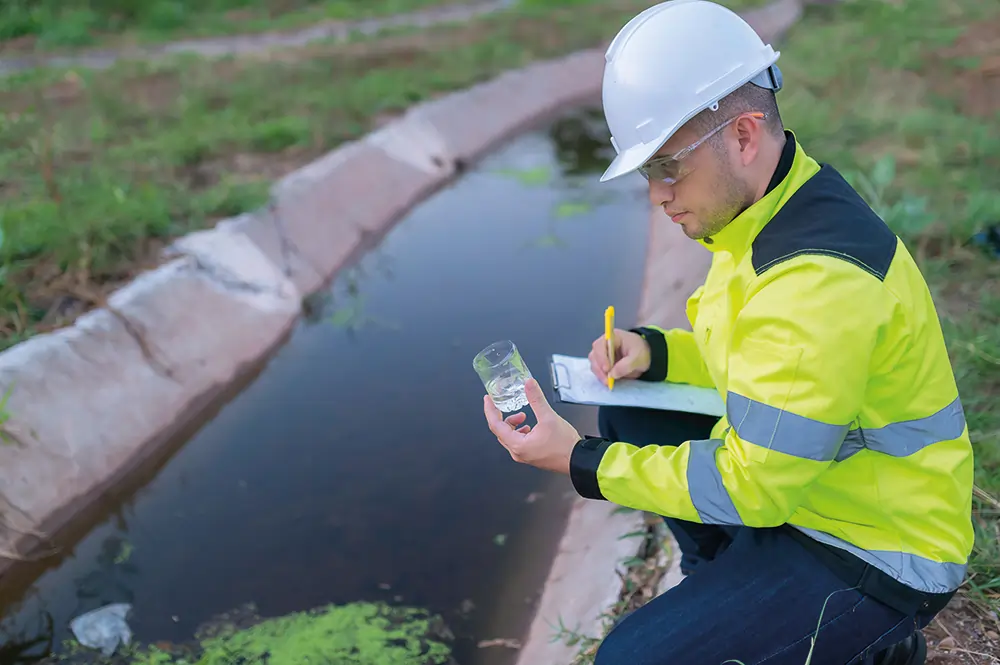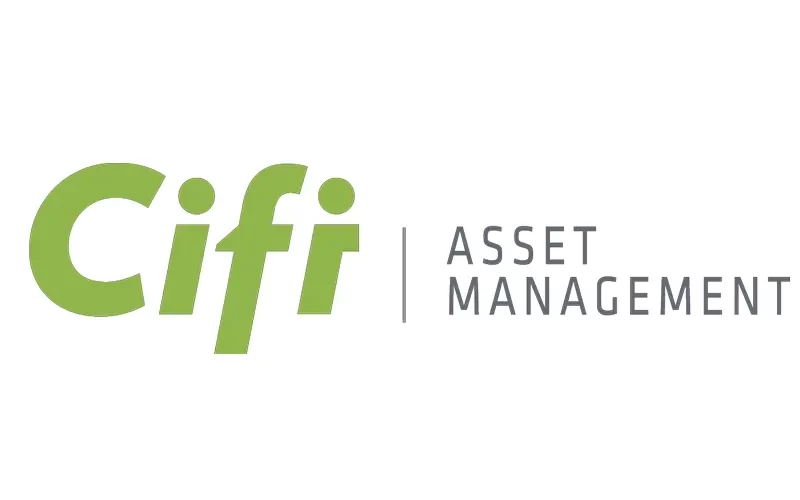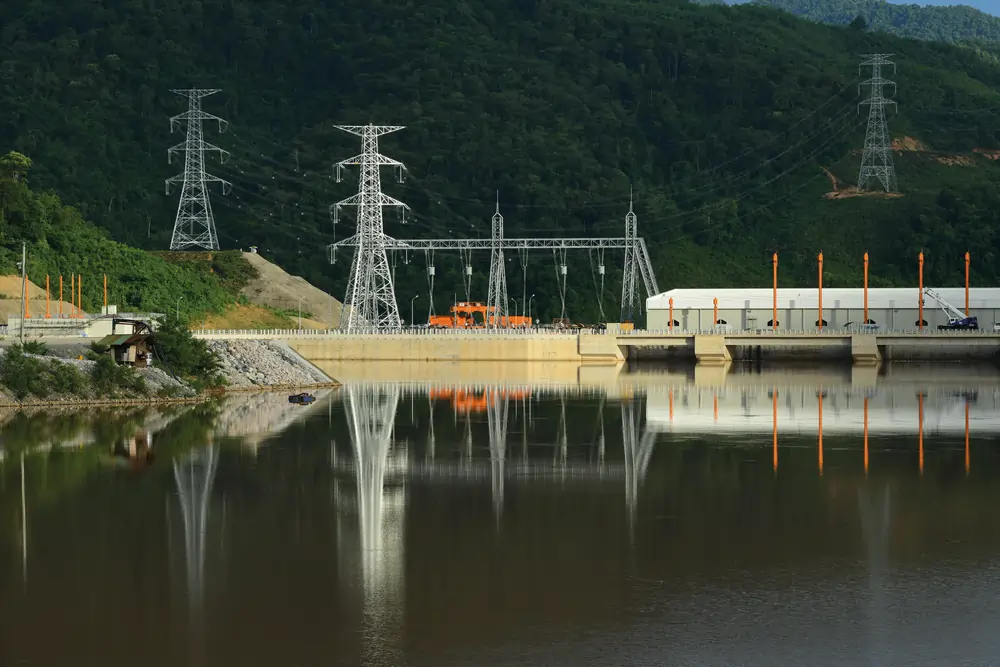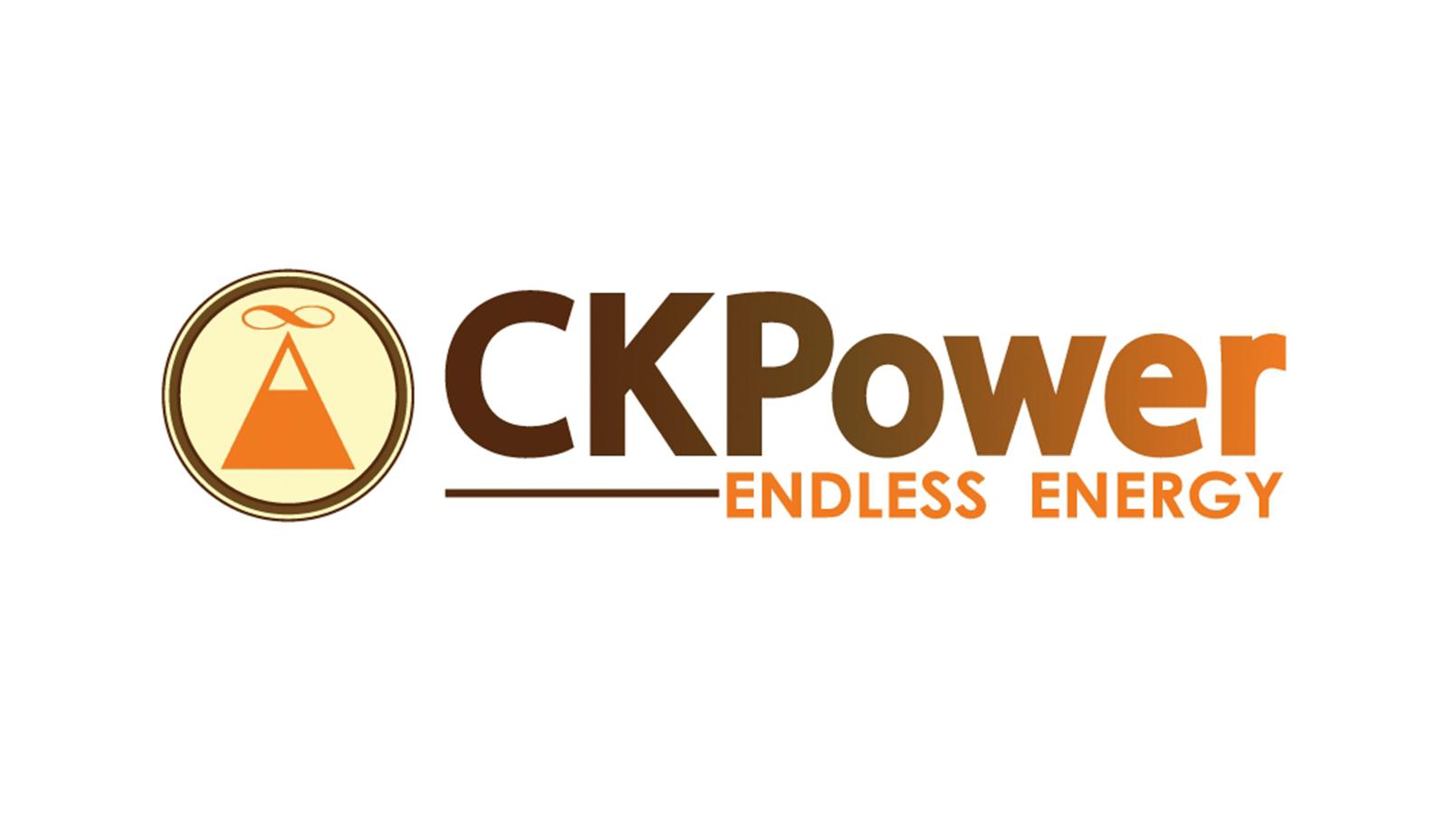Why businesses must begin their net zero journey now

John E. Kaye
- Published
- ESG, Home, Sustainability

Making the transition to a more sustainable business model brings benefits beyond reducing emissions, and it can all begin with quick wins, says Heiner Himmelreich of BCG
Climate change is no longer a distant problem, with its effects being felt globally in the form of heatwaves and unusual cold snaps. The urgent need for businesses to take concrete sustainability and climate action has never been more pressing. Many businesses, both big and small, are making commitments to improve environmental sustainability and reach net zero carbon emissions. For example, half of the largest businesses in the UK have pledged to reach net zero by 2050.
However, the challenge lies in turning these commitments into tangible actions. Simply offsetting a company’s own emissions is not enough. Business leaders must now focus on creating solutions that help other’s businesses reach the same goal. This means that businesses must go beyond just reducing their own carbon footprint and consider the entire supply chain and its impact on the environment.
Three types of emissions
When it comes to reducing emissions, companies have three types of outputs to consider. The first type is emissions generated directly by the company itself, the second type is emissions created indirectly through the use of electricity, heating, cooling, etc., and the third type, which is the hardest to measure and tackle, is emissions produced indirectly through the company’s supply chain.
To make their supply chains more eco-friendly, companies should focus on five key areas, as suggested by BCG during the World Economic Forum. These include transparency, reducing emissions through optimised operations, engaging suppliers, working with partners, and implementing low-carbon governance programmes.
At the same time, to achieve these goals, companies must have the right talent and technology. Many businesses are already in the process of a digital transformation, but a sustainability transformation must be a substantial part of this too. Only then will both digital and sustainability transformations reach their full potential.
Gather, track, report
To make informed decisions about sustainability, companies require up-to-date emissions data. Despite this, the technology that many companies currently use to gather, monitor, and report emissions data is often inadequate. This leads to a fragmented and unreliable system that relies heavily on spreadsheets.
Spreadsheets may provide some flexibility for inputting numerical data, but they can also be manipulated and are prone to errors without a content
management system in place to track changes from various sources. As governments and investors demand more accurate emissions reporting, companies need to adopt new systems to keep up.
Fortunately, digital platforms and solutions are now available to help companies design and implement sustainability programmes. These platforms can drive value at various stages, including the supply chain, if they are properly integrated and address both technological and human behavioural changes.
Having said that, simply reducing a company’s own greenhouse gas emissions is not enough. To make a lasting impact, the emissions of suppliers and clients must also be re-evaluated. Technology will play a critical role in enabling companies to make meaningful changes across the entire value chain.
Areas where technology can help
To reach net zero value chains, companies must create a technology roadmap that focuses on several key areas. The first step is capturing and reporting emissions data, which can be done by developing and improving data platforms. Businesses should gather emissions data within their control using data capture and migration tools, and then use non-financial data reporting platforms and business intelligence to provide organization-wide access and visibility. Technologies like the Internet of Things (IoT) and blockchain can help with real-time, automated, and integrated carbon reporting.
Measuring emissions within a company’s value chain can be challenging, especially when it comes to data sharing. To address this, companies should first agree on emission measurement methodologies with suppliers and make existing data accessible through electronic data interchange systems. By using AI and blockchain for verification, businesses can optimise data sharing, reduce the cost of validating supplier data, and move from unreliable spreadsheet-based data sharing to accurate, trustworthy data on open platforms.
The use of AI and IoT will also play a crucial role in automating decision-making and supply-chain planning, making CO2 emissions a decision metric. In the next two to five years, new technologies like digital twins will further improve innovation and reduce the effort needed in product lifecycle management and R&D.
It won’t be easy
Many businesses have set ambitious goals such as reaching net zero emissions, but they often lack a concrete plan on how to achieve these targets. In fact, not delivering on a sustainability commitment can be more damaging than not making one at all, as it undermines a company’s credibility among stakeholders.
Transforming a business to be more sustainable is a complex and challenging process, especially when initiatives span multiple business units and functions. It requires collaboration across the entire value chain, from raw material suppliers to end customers, as well as partnerships with industry coalitions and other stakeholders. Companies must not only make their existing operations more sustainable but also identify new opportunities arising from sustainability and climate change.
Additionally, companies are under pressure to publicly report their sustainability performance, but the data can be inconsistent and the reporting standards are constantly evolving. Despite these challenges, companies must act now to meet customer demands, access capital, and mitigate risks. In the near future, sustainability will be a basic requirement for businesses and those that excel in this area will have a competitive advantage. However, the window of opportunity is closing, so companies must act fast.
Slow and steady doesn’t win the race
Large-scale transformations, such as sustainability efforts, require reallocation of resources and additional funding. Then again, the entire budget does not have to be secured at once. Instead, small amounts can be rapidly unlocked in the early stages and used to fund later parts of the program. Quick successes, implemented in the right order, can make the effort self-sustaining.
The same principle applies to sustainability transformations. Companies should aim to make rapid progress in the beginning, which can build momentum for more challenging measures that take longer to show results. It is also important to integrate climate and sustainability initiatives into ongoing transformation efforts for a comprehensive program that spans the company’s operations and value chain.
While companies have set ambitious climate and sustainability targets, they will not reach these goals without a structured transformation process. While there are common challenges, each has a clear solution. The same principles that drive successful business transformations apply to sustainability transformations as well. By following these principles, companies can turn their sustainability goals into action and create a greener future.
A wealth of benefits
In the future, companies and industries will use digital technology to transition to more sustainable business models and products. It’s crucial for business leaders to recognise the potential for technology to drive sustainability and to consider the positive impact it can have on other businesses and the environment.
Making the transition to a more sustainable approach comes with benefits beyond reducing emissions. Companies can also save money, increase profitability, and improve competitiveness through measures such as reducing physical waste, improving energy efficiency, and increasing resource productivity. While reaching net zero carbon goals will require effort and change, it’s an important step that offers benefits not only to business’ bottom line but also to the planet.
ABOUT THE AUTHOR

Heiner Himmelreic is a Partner and Director at BCG.
Sign up to The European Newsletter
RECENT ARTICLES
-
 Jersey builds on regulatory strength to stay globally competitive
Jersey builds on regulatory strength to stay globally competitive -
 Why hybrid energy systems are set to power the continent
Why hybrid energy systems are set to power the continent -
 ees Europe: The rise of large-scale storage systems
ees Europe: The rise of large-scale storage systems -
 From reputational risk to competitive advantage
From reputational risk to competitive advantage -
 Take your business success full circle
Take your business success full circle -
 Designed for life
Designed for life -
 Is your ESMS fit for purpose?
Is your ESMS fit for purpose? -
 Digitally enable your ESG solutions
Digitally enable your ESG solutions -
 Afore SURA - The journey to sustainable investment
Afore SURA - The journey to sustainable investment -
 ESG at IDFC FIRST Bank
ESG at IDFC FIRST Bank -
 Takeaways from eco food study
Takeaways from eco food study -
 It’s all about sustainability
It’s all about sustainability -
 Invest in a Greener Tomorrow with Westbrooke Associates
Invest in a Greener Tomorrow with Westbrooke Associates -
 Q&A with Cifi Asset Management's Ricardo Rico, Head of Funds & Javier Escorriola, Managing Partner
Q&A with Cifi Asset Management's Ricardo Rico, Head of Funds & Javier Escorriola, Managing Partner -
 The present calls for sustainable investments, and CIFI has heard that call
The present calls for sustainable investments, and CIFI has heard that call -
 The power to transform tomorrow
The power to transform tomorrow -
 UK to mismanage quarter of a million tonnes of plastic waste this year
UK to mismanage quarter of a million tonnes of plastic waste this year -
 How can visionary design save the world?
How can visionary design save the world? -
 Interview with Thanawat Trivisvavet, Managing Director of CKPower
Interview with Thanawat Trivisvavet, Managing Director of CKPower -
 Elsewedy Electric - Powering progress
Elsewedy Electric - Powering progress -
 Thailand’s CKPower leads sustainable business model
Thailand’s CKPower leads sustainable business model -
 It’s time to focus on the ‘S’ in ESG
It’s time to focus on the ‘S’ in ESG -
 The seven competencies of ESG leaders
The seven competencies of ESG leaders -
 Why businesses must begin their net zero journey now
Why businesses must begin their net zero journey now -
 Every drop of the ocean is connected - Ocean Bottle
Every drop of the ocean is connected - Ocean Bottle


